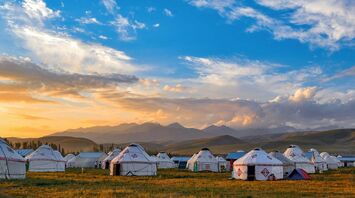Embrace Authenticity: The Rise of Culturally Immersive Lodgings

Travelers seeking more than just a vacation are turning to culturally immersive lodgings to connect deeply with the places they visit. This trend, which blends local traditions, architecture, and cuisine, offers an enriching experience that goes beyond conventional tourism. At the forefront of this movement is Three Camel Lodge in Mongolia's Gobi Desert, where guests stay in traditional yurts and engage in Mongolian customs, from archery to throat singing.
This push towards authentic travel experiences is fueled by a desire to create lasting memories that resonate on a personal level. According to American Express Travel’s 2022 Travel Trends Report, 70% of respondents expressed interest in trips that involve deep cultural immersion. These experiences, as Paul J. Zak of Claremont University explains, enhance dopamine and serotonin levels, leading to "peak memories" that are profoundly memorable.
Choosing the Right Immersive Experience
For those intrigued by this kind of travel, selecting the right accommodation is crucial. It’s not just about finding a place to stay but about ensuring it offers genuine interactions with local cultures and contributes positively to the community. Samantha Hardcastle, of the Storied Experience, advises looking for properties that integrate locals not just as service providers but as peers, creating a mutually respectful exchange.
Properties such as Kenya’s Kalepo Camp and Quebec’s Ekionkiestha’ National Longhouse exemplify this model by involving local communities in meaningful ways. These places not only offer a unique glimpse into the local way of life but also support the economic and social fabric of the communities.
Luxury vs. Rustic Stays
The spectrum of immersive lodgings ranges from rustic village stays to luxurious hotels that reflect local traditions through architecture and decor. For example, Sala Lodges in Cambodia feature traditional Khmer wooden houses, while Shinta Mani Mustang in Nepal showcases local art and craftsmanship. These higher-end options provide comfort while still offering an authentic glimpse into the regional culture.
Conversely, homestays offer a more grassroots experience. They might involve staying in a bamboo hut in Borneo or a mudbrick manyatta in Kenya, where daily activities are shared with the hosts. While these experiences may sometimes stretch comfort zones, they offer unparalleled insights into the local lifestyle.
The Future of Travel
As Jalsa Urubshurow, founder of Three Camel Lodge, points out, the uniqueness of local architecture and community involvement enriches the travel experience, making it far from generic. This movement towards culturally immersive travel is not just about seeing new places but about experiencing them in a way that is respectful, enriching, and transformative.
Travelers today are not just looking to escape but to connect—something that culturally immersive lodgings provide in abundance. As this trend continues to grow, it promises to reshape expectations and experiences in the travel industry, making journeys as impactful as they are memorable.



















